Two inspiring river activists from China and Kenya, came together for a public event in San Francisco. With the Three Gorges and the Gibe III dams, Dai Qing and Ikal Angelei have taken on some of the most destructive development projects of the past 20 years. Through our global grassroots network, they have engaged in what may be called the great dam builders’ Whac-a-Mole.

Date: Wednesday, April 18, 2012 - 16:25

Date: Monday, April 16, 2012 - 15:53
Ikal Angelei, the founder of Friends of Lake Turkana in Kenya, received the prestigious Goldman Environmental Prize in 2012. The award honored an activist who is defending the interests of 500,000 poor indigenous people against a destructive hydropower dam, and has successfully taken on many of the world’s biggest dam builders and financiers.

Date: Friday, March 23, 2012 - 15:54
Jim Yong Kim rapping at Dartmough CollegeYoutubeJim Yong Kim – a public health expert, president of Dartmouth College and astute rapper – is the US government’s candidate for the presidency of the World Bank. As Dani Rodrik, a development expert at Harvard University, summed it up this morning, “it’s nice to see that Obama can still surprise us.” Will the new candidate, who was not on anybody’s shortlist for the position, be able to reinvent the World Bank?

Date: Tuesday, March 6, 2012 - 12:33
The national parks of the Lower Omo Valley in Southwest Ethiopia are among “the last unspoiled biodiversity hotspots in Africa” and constitute “resources of all people in the world.” These are not the words of tree-hugging foreign environmentalists, but of Ethiopian government officials who recently prepared a report about the region. The Gibe III Dam and the sugar plantations associated with it are now putting these unique biodiversity hotspots at risk.
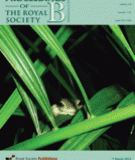
Date: Wednesday, February 8, 2012 - 12:35
Tree of LifeWikimedia CommonsAll life on Earth began in the sea some 3.5 billion years ago. Yet there is a twist to this story. New research shows that almost all fish species that inhabit the oceans today moved there from rivers and lakes. This sheds new light on the importance of freshwater ecosystems for life on Earth. And it suggests that by damming and polluting rivers, we may destroy the seed banks of future generations.

Date: Wednesday, January 25, 2012 - 10:45
Milestone birthdays are opportunities to take stock of our family, health and financial situation. So how is Planet Earth doing 20 years after the Earth Summit, the historic UN Conference on Environment and Development in Rio de Janeiro? The planet’s economic output has more than doubled since 1992. Some members of the global family are doing extremely well, but the number of hungry people is increasing. And the planet’s health is steadily deteriorating, with vital ecosystems nearing the point of collapse.

Date: Tuesday, December 13, 2011 - 16:14
Villagers affected by the Inga DamMost of the world’s poorest people lack access to basic services such as clean water and electricity. The World Bank and the Group of 20 are now proposing a new strategy to scale up infrastructure investment in developing countries. They pay lip service to the needs of the poor, and promote subsidies for large private projects such as the proposed Inga Dam on the Congo River. A new report from Christian Aid demonstrates that a more promising approach to reducing poverty and protecting the climate is possible.
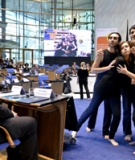
Date: Monday, November 21, 2011 - 15:12
Nexus HugDuring the last few days I attended an international conference on the nexus of water, energy and food security in Bonn. The event offered a lot of diplomatic hot air, some promising ideas and engaging discussions. We were even taught a new way of hugging our fellow participants - the "nexus hug" - and practiced working in the embrace of dam builders, UN bureaucrats and government officials.

Date: Friday, October 28, 2011 - 08:06
Exclusive club: the G20 heads of stateDemocracy is a messy affair. It forces government officials and politicians to face parliamentary scrutiny, pesky journalists and grassroots pressure. While they uphold democracy and good governance in their rhetoric, governments and the World Bank have begun to shift important decisions about global development to the Group of 20, a body that is largely shielded from public debate and democratic control. It’s time to shed some light on an institution that has become a key power broker for the interests of the global 1%, including through the promotion of large dams.

Date: Friday, September 23, 2011 - 10:32
Bottom-up approaches conserve water and strengthen climate resilience in agricultureCIIFAD CornellWhen the World Commission on Dams reviewed the development effectiveness of dams, multipurpose projects with large dams, power plants and irrigation schemes had the worst social, environmental and economic track record. As the world is grappling for appropriate answers to climate change, influential actors such as the World Bank want to give these complex schemes a second chance. They are wrong. While we need to integrate the concerns of climate change, water, energy and food security, we don’t need to go back to old-fashioned multipurpose schemes like the Narmada dams. And while we need to store water to adapt to a changing climate, we can do so in other ways than the big, centralized reservoirs of the past.
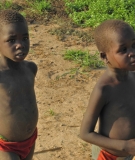
Date: Monday, September 12, 2011 - 00:00
Displaced by a landgrab in Western EthiopiaOakland InstituteAs food prices rise, the lands of rural communities are being snatched up for plantations at an alarming rate around the world. According to the World Bank, large agricultural land deals made up an area the size of Sweden in 2009 alone. A new report documents how the controversial Gibe III Dam is fueling landgrabs in Southwestern Ethiopia right now. These grabs will compound the dam’s impacts on poor communities and their unique ecosystems.

Date: Friday, July 22, 2011 - 09:18
Lake Turkana World Heritage SiteAlison M. Jones for www.nowater-nolife.orgPlaces like the Grand Canyon, Taj Mahal and Great Wall of China are of such outstanding cultural or natural value that the world’s governments have committed to protect and preserve them for future generations. The UN’s World Heritage Committee recently called on the Ethiopian government and Chinese financiers to suspend the Gibe III hydropower project to fulfill their obligation for the protection of such a site. Read more about this exciting development.
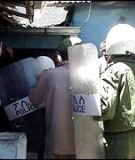
Date: Wednesday, July 13, 2011 - 08:54
Police intimidation in EthiopiaBBCAt the end of June, Reeyot Alemu, an Ethiopian journalist, was thrown into jail after she dared to raise questions about the proposed Grand Millennium Dam. This is only the latest example of the severe repression that the Ethiopian government metes out against anybody who takes a critical position on its massive hydropower projects. In spite of such repression, the International Hydropower Association recently recognized Ethiopia’s power utility as a “Sustainability Partner.” This is a telling example of the dam industry’s current propaganda effort – an effort that is at best naive and at worst cynical.

Date: Wednesday, June 22, 2011 - 22:23
Kader Asmal and Nelson Mandela at the launch of the WCD reportThe World Commission on Dams was one of the most unusual experiments in global governance. Mandated to develop a new model for water and energy projects, it brought together, among others, a firebrand activist from India, a corporate CEO from Sweden, an indigenous rights advocate from the Philippines, and a dam engineer from the US. Thanks to the genius and determination of its chair Kader Asmal, this unlikely group of experts from opposite walks of life worked together to produce a breakthrough for human rights and the environment. Unlike many other such documents, their report, Dams and Development, has never gathered dust. Earlier today, Kader Asmal – an independent spirit and tireless advocate for human rights – died in his native South Africa.
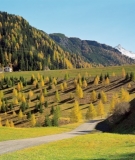
Date: Thursday, June 16, 2011 - 17:49
The Marmorera DamMargherita SpiluttiniWhen I was in fifth grade, we spent a week at the Marmorera Dam in the Swiss Alps, where we learned about the wonders of hydropower, the “white gold” of Switzerland. I loved the cute village which had been rebuilt on the reservoir, and admired how the 91 meter high earthen dam had been planted with grass and pine trees. Years later I learned how the affected families had been cheated when they were resettled, and how their community has remained scarred ever since. When I see the dam’s green cover now, it reminds me of how dam builders often try to brush over the problems of their projects.Today, the International Hydropower Association (IHA) has launched a new global effort to greenwash hydropower.
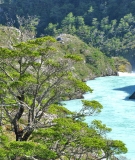
Date: Tuesday, June 14, 2011 - 09:30
Pascua River, ChileAccording to a new report which the Intergovernmental Panel on Climate Change (IPCC) published today, the sky is the limit for the expansion of renewable energy. With an investment of slightly less than 1% of global GDP, renewable energy could contribute up to 43% of the world’s energy supply by 2030, and 77% by 2050. Such an increase could stabilize the CO2 concentration in the atmosphere at 450 ppm and may be just enough to avoid catastrophic climate change. It would also boost energy access for the 1.4 billion people who currently live without access to electricity.
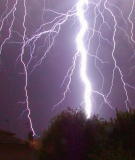
Date: Wednesday, June 8, 2011 - 10:39
Lightning StormWikimedia CommonsOnly 140 kilometers from our Berkeley office, the Folsom Dam towers 100 meter high over the American River. When it was built in the 1950s, the project was supposed to withstand the most severe flood in 250 years. Yet after it was completed, strong floods suddenly became more frequent and overtopped the dam at several instances. Until a safety upgrade goes forward, 440,000 people in the downstream area are exposed to the highest level of flood risk in the US. Scientists have now found evidence that the project’s problem may be partly of its own making, and that dams can in fact kick up a storm.
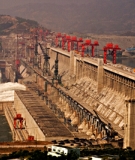
Date: Thursday, May 19, 2011 - 16:56
The Three Gorges Dam on the Yangtze RiverIn an unexpected statement, China’s government has just acknowledged the serious problems of the Three Gorges Dam. “The project is now greatly benefiting the society in the aspects of flood prevention, power generation, river transportation and water resource utilization,” the government maintained, but it has also “caused some urgent problems in terms of environmental protection, the prevention of geological hazards and the welfare of the relocated communities.” On the same day, it announced concrete measures to improve the living conditions of the displaced people, protect the Yangtze’s ecosystem and prevent geological disasters. What is new about this acknowledgment? And what does it mean for China’s future dam building plans?
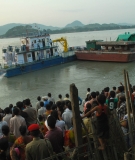
Date: Wednesday, May 11, 2011 - 18:16
Activists return turbines for Lower Subansiri Dam to senderWith more than 150 dams proposed for construction and 11 projects in operation, Northeast India is one of the hotspots of global dam building. The biggest project under construction is the Lower Subansiri Dam on the border between the states of Assam and Arunachal Pradesh. Social movements have organized massive protests against the mega-project in the Himalayan foothills over several years. In a huge success, they have just managed to send the turbines for the project back to the sender.

Date: Monday, April 25, 2011 - 00:46
Closed door policy: Ikal Angelei at the gates of ICBC in BeijingThe travels of Ikal Angelei, the passionate director of Friends of Lake Turkana, illustrate the changes in the global dam business. Fighting against the destructive Gibe III Dam in Ethiopia, Ikal has taken on managers of international financial institutions in Washington, Dakar and Prague, and mobilized allies at global civil society meetings in Turkey and Mexico. Her latest trip brought her to Beijing, where she addressed the role of China’s global dam financiers. I had the pleasure to travel with her. Here is an update.
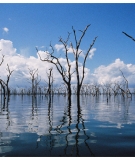
Date: Wednesday, March 30, 2011 - 07:54
Dead trees in Balbina ReservoirPedro Ivo SimoesClimate funds such as the Prototype Carbon Fund and the European carbon market prioritize support for renewable energy technologies, and exclude large hydropower from this definition. There are good reasons for this: Big dams irreversibly damage freshwater ecosystems, which are already reeling under the impacts of climate change. Slow, lumpy investments in large dams are not well suited for the uncertainties of climate change, which call for nimble, decentralized and flexible energy strategies. Finally, the purpose of carbon credits is to facilitate emission reductions that would not happen without them. Yet developers of big hydropower projects will not make billion dollar investments based on the uncertain prospects of receiving carbon finance. Carbon credits for big dams are the icing on the cake of projects that are already going forward, and will not bring about reductions in greenhouse gas emissions.

Date: Thursday, March 3, 2011 - 16:27
Barbie ShanghaiChina may be the epicenter of the global environmental crisis. Along the Yangtze, Yellow and Pearl rivers, fragile ecosystems meet the world’s largest population and most rapacious economy. In an epic journey, Jonathan Watts, the Guardian’s Asia environment correspondent, has visited the places where the world’s factory is bursting at the environmental seams. In a new book, he reports what he has seen.
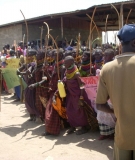
Date: Wednesday, February 23, 2011 - 12:48
Affected people protest against the Gibe III DamFriends of Lake Turkana On a day when people took to the streets in Libya, Yemen and Bahrain, dam-affected people organized protests against destructive dams at the Chinese embassies in Kenya and Sudan. Among them was our friend Ikal Angelei. Her efforts illustrate the changing face of international grassroots struggles.

Date: Friday, January 28, 2011 - 10:24
Celebrating the WCD ReportAppropriately, my strongest memory of Patrick McCully is from a river. Rushing down the spectacular Bujagali Falls in Uganda, our departing boss and I clung on to our inflatable raft for dear life. Washing off the stress of long meetings with dam builders, Paddy shouted his delight about a river he had helped to save at the top of his lungs. At the end, like throughout his professional life, he managed the riverine challenges well – and got a big kick out of it.
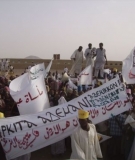
Date: Thursday, January 20, 2011 - 17:15
Protest against the Kajbar Dam in SudanDams have impoverished tens of thousands of people and triggered serious human rights violations in Sudan. Now Chinese companies have won contracts to build three more hydropower projects in the country. Of particular concerns are plans to dam the Nile near Kajbar, on the lands of ancient Nubia. This project has already caused massive human rights abuses. Affected people are strongly opposed to it, and have raised the specter of a second Darfur conflict.

Date: Sunday, January 2, 2011 - 16:03
Energy efficiency looks like the perfect solution to our energy problems. Efficiency gains not only reduce our energy consumption, but typically pay for themselves. They are “not a free lunch, but a lunch you’re paid to eat,” Ernst Ulrich von Weizsäcker, Amory Lovins and Hunter Lovins argue in their influential book, Factor Four. Their twin benefits make efficiency improvements politically more feasible than measures such as carbon taxes.A recent story in The New Yorker magazine has cast doubts about the effectiveness of energy efficiency. “The problem with efficiency gains is that we inevitably reinvest them in additional consumption,” argues David Owen in his article, "The Efficiency Dilemma." His story has triggered a heated debate in the blogosphere. Here is an overview of the issues at stake.

Date: Tuesday, December 21, 2010 - 10:44
Need not apply: legs visibleUBS, one of the world’s biggest banks, has been accused of dirty business for years. The Swiss bank helped the Marcos and Mobutu clans stash away their ill-gotten wealth, and allegedly funneled more than $1 billion into Bernie Madoff’s Ponzi scheme. It was a key financier of South Africa’s apartheid regime, and funds destructive coal mines around the world.A leaked document shows that the bank is now making an effort to clean up its act. “We will strengthen the image of UBS as a company that has integrity and a sense of responsibility if we behave beyond reproach in our daily interactions with all interest groups,” the internal document says. Yet it does not advise you on how best to avoid tainted assets. The manual will tell you what you may expect from your UBS banker in terms of proper attire and hygiene. Here are some examples from the bank’s new dress code:

Date: Friday, November 19, 2010 - 10:18
The foxes of the private sector have always enjoyed guarding the henhouse. In the United States, Wall Street bankers have for many years taken senior positions at the Treasury Department, where they have weakened the oversight of the banking sector. Before it was disbanded over the disastrous oil spill in the Gulf of Mexico, the government’s Minerals Management Service maintained a revolving door with the oil industry, and had a direct financial stake in the activities of industry which it is supposed to oversee. Such arrangements benefit the companies, but not the public at large.

Date: Tuesday, November 16, 2010 - 11:19
Ngoh Seh Suan/Wikimedia Commons Ten years ago on this day, Nelson Mandela launched the report of the independent World Commission on Dams (WCD) at a glitzy ceremony in London. The Commission – composed of prominent members of governments, the dam industry, civil society and academia – had carried out the first in-depth assessment of the development impacts of dams. It found that while “dams have made an important and significant contribution to human development,” in “too many cases an unacceptable and often unnecessary price has been paid to secure those benefits”. For example, dams have displaced 40 to 80 million people worldwide, and most of these people have been impoverished in the process.
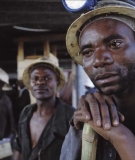
Date: Wednesday, October 20, 2010 - 12:24
African minersChristian Aid/David Rose Miners work at the physical edge of our consumer society. Like the canary in the mine shaft, they are sentinels for the triumph, toil and tragedy of the global economic system. Only days after the miraculous rescue of the Chilean miners, Chinese supervisors shot and wounded 11 workers in a coal mine in Zambia on October 15. The labor conflict casts a dark shadow on the track record of Chinese overseas investors.



